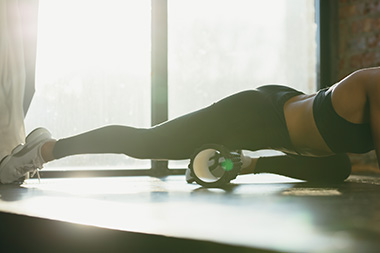
Rouvy App Review
Explore the Rouvy app's immersive AR features and compatibility with JTX Fitness bikes in this detailed review. Learn about real-world route simulation, interactive resistance control, training plans and more to enhance your indoor cycling experience.
Read More
FitShow App Review
FitShow offers a variety of workout experiences, from a simple athletics track interface to more immersive virtual courses, similar to those found on Zwift and Kinomap.
Read More
Top 10 Fitness Podcasts
Fitness podcasts can be a great alternative to listening to music when working out. They can allow your mind to focus whilst also providing you with expert advice and motivation. We’ve searched Spotify and found 10 of the best fitness podcasts out there, from running advice to tips on strength training.
Read More
Foam Roller Workout Videos
Foam rollers are an extremely useful and popular fitness accessory that can be used by anyone. To help you get the most out of your foam roller and to ensure you are using it correctly, we’ve gathered up 4 of the best foam roller workout videos for you to follow along to.
Read More
Best Dumbbell Workout Videos
Beyond building muscle, dumbbell workouts burn a lot of calories, improve flexibility, build stronger bones and improve your cardiovascular health. With this in mind, we have scoured the internet to find a selection of the best dumbbell workout videos to help you reach your fitness goals.
Read More









